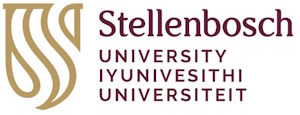
“From a young age, I was very interested in electronics and computer programming, and was therefore keen to pursue a career in this field. This passion came from my dad, who built basic circuits with me, and taught me how to write computer programmes even before I went to Grade 1,” says Rensu Theart who received his PhD degree in Electronic Engineering at Stellenbosch University in April this year. Dr Theart is a lecturer in the SU Department of Electrical and Electronic Engineering.
Dr Theart’s decision to study Engineering was spot on. He excelled in his study career and achieved distinctions in all his undergraduate modules. In his final year he was the recipient of the ECSA Medal of Merit, which is awarded to the Matie final-year student with the highest average over four years. Not only did he perform well academically, he also seems to have the right characteristics to make a good engineer. “I am a naturally curious person,” he explains. “I very much enjoy creative pursuits where a problem is given and you are given the opportunity to solve it using engineering skills. I have always felt that I would in some way like to make the world a better place, and one of the interesting ways in which this can be done, is by developing new technology that can enable new discoveries or improve the quality of life and standard of living of people.”
He talks about his journey as a postgraduate student: “The topic of my doctoral thesis was Virtual reality assisted fluorescence microscopy data visualisation and analysis for improved understanding of molecular structures implicated in neurodegenerative diseases. At the time I started doing my postgraduate studies, I was living in Kroonstad and had to choose a topic that I could do from there. This limited me to software development. During this time, when I was considering different topics, I also spoke to my supervisor, Prof Thomas Niesler, who had recently acquired an early virtual reality headset and was looking for a project to do with it. One of his colleagues in Physiological Sciences was interested in visualising some of their cells in 3D and after some initial discussion, the topic was born. It ended up growing and expanding in scope quite significantly as we started working on the project which ultimately led to an upgrade of my master’s study to a PhD.
“In my research, we developed a virtual reality system that is capable of visualising and analysing three-dimensional cell samples with the hope of gaining a deeper understanding of how both healthy and sick cells function on a molecular level. We were mainly looking at neuronal cells that are found in the brain and considered different subcellular parts of the cells that are affected by neurodegenerative diseases such as Alzheimer’s disease in order to treat or prevent it.”
Dr Theart has certainly come a long way since the days when he built basic circuits and wrote simple computer programmes. His PhD research testifies to this. He explains the contributions his work has made: “Primarily, I developed new analysis methods and tools that allow researchers in molecular biology to have more accurate and reliable data about their cells, which can, in turn, help them to come to better conclusions regarding the function of healthy and sick cells. Since the majority of these methods contain a significant visual component, researchers can quickly and intuitively understand what is going on within the samples that they analyse. Furthermore, since the visualisation is happening in 3D virtual reality, this allows for an unambiguous interpretation of the complex three-dimensional structures within a cell, and allows for more accurate region of interest selection, which is necessary for the accurate analysis of the cell.”
Regarding his postgraduate studies, he says: “I enjoy research and development very much, which is what my postgraduate studies allowed me to do. One of the main joys of doing postgrad is the freedom that you have to explore and pursue different avenues of research, even if some of them end up not leading to anything. Being someone who is curious about many things, I enjoyed the ability to spend a week on learning a new concept or a new tool without having immediate, pressing time restrictions, such as those of a normal job. One of the challenges is that with a PhD you are developing things that have not been achieved before, you are generating a new body of knowledge, and this can sometimes feel quite daunting since there is no one to help you if you get stuck with some detail – you are now the expert.”
Currently, Dr Theart is a lecturer in the Department of Electrical and Electronic Engineering at Stellenbosch University. On the research front he is continuing with the research he started during his PhD. He notes: “By the time of hand-in, there were already a few aspects which could be explored further and new research questions which can now be answered with the system that I developed.”
When asked about how he is coping with online teaching and lock down, he answers: “I’m coping well. It has definitely been more time consuming and challenging than normal and I am looking forward to the time where I can draw out explanations with chalk on a board in front of a class of students again. The transition to online teaching has definitely taken its toll on my time and I have been hard at work with my normal lecturing duties while trying to do as much research as possible. The number of meetings and conference calls has also dramatically increased. On a more family orientated note, I have been able to enjoy time at home with my 4-month-old son, Luka, and being able to support my wife, Jessica, in raising him. This is such a precious time of his life that I have the privilege of being a part of. My future plans at the moment are to stay at Stellenbosch University and continue teaching and researching.”
Title: Virtual reality assisted fluorescence microscopy data visualisation and analysis for improved understanding of molecular structures implicated in neurodegenerative diseases.
Summary: Visualisation and analysis of three-dimensional fluorescence microscopy datasets are commonly performed in two dimensions, but this can diminish the accuracy of the analysis. We present a virtual reality-based system that allows three-dimensional precision region of interest selection and colocalisation analysis as well as the visualisation of spatial correlation between the underlying fluorescence channels. We use this to develop a new method that automatically localises and quantifies mitochondrial fission, fusion and depolarisation events in three-dimensional time-lapse sequences. These techniques are shown to offer new insights into the molecular structures implicated in Alzheimer’s disease.
Photo left: Dr Rensu Theart with his wife, Jessica, and their son, Luka.
Photo right: Precise 3D region of interest selection and sample navigation using interactive hand tracking in virtual reality.



